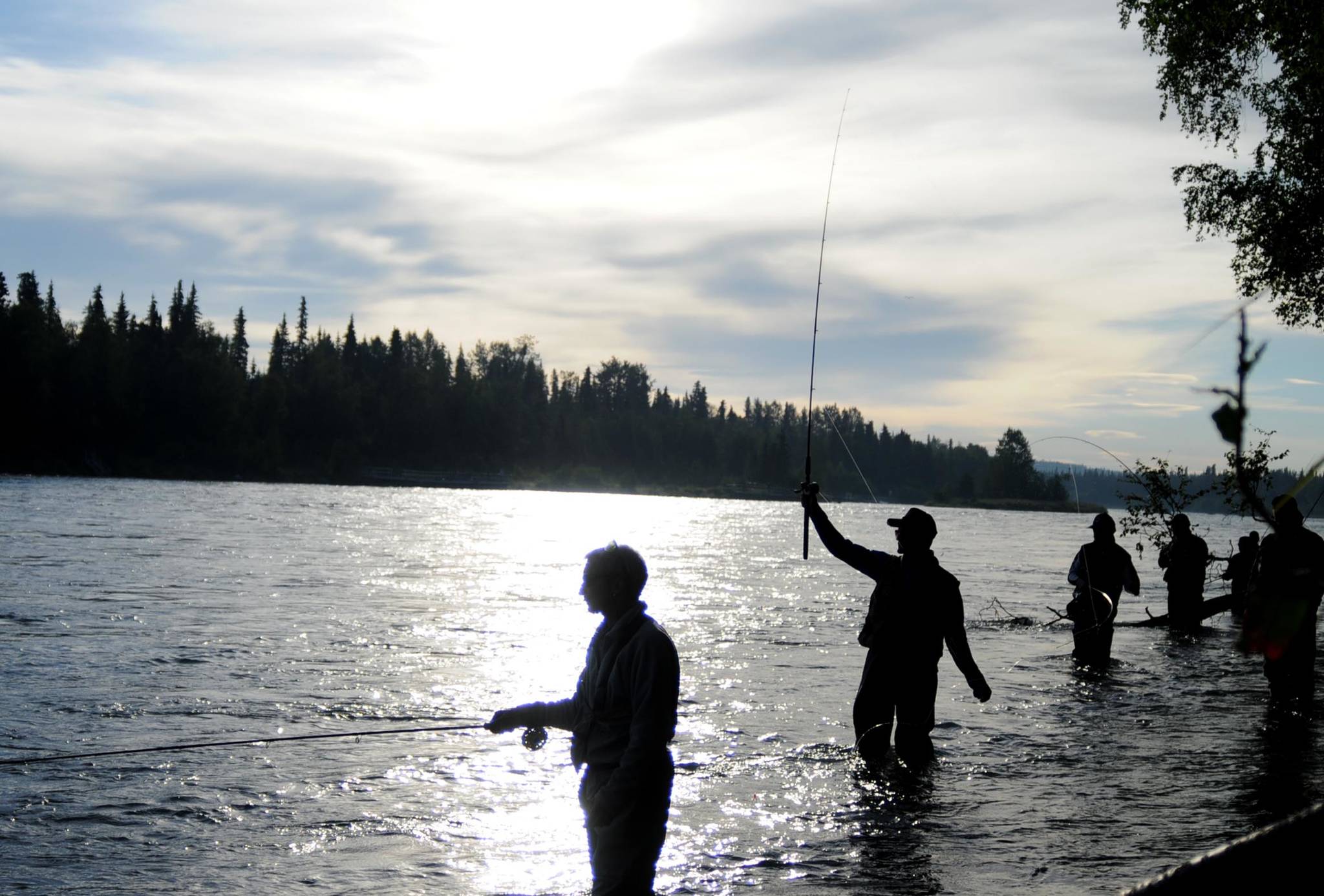The Alaska Department of Fish and Game sold nearly 50,000 more sportfishing licenses and stamps and hunting licenses in 2016 than it did in 2015, according to Fish and Game data.
Overall, the department sold 751,050 licenses and stamps for sportfishing and hunting, not including hunting tags, in calendar 2016. That’s a sharp increase over 2015, when 701,010 licenses and stamps were sold. It’s about 100,000 more licenses than were sold in calendar year 2011, according to Fish and Game data.
It’s not the highest sales year ever — that was in 2005, when the department sold 786,998 sportfishing licenses and stamps and hunting licenses — but it’s the most sold since 2008, according to Fish and Game records.
In fiscal year 2016, which lasted from July 1, 2015 to June 30, 2016, the department brought in a total of $13.7 million in license sales, which was higher than projected, according to the Division of Sport Fish’s fiscal year 2016 report.
One of the Division of Sport Fish’s identified goals in its 2015–2020 strategic plan is to increase nonresident license sales. For 2015–2016, nonresident sportfishing licenses increased across the board, with the largest bump in one-day licenses. Nonresident king salmon stamp purchases increased across the board as well.
Resident sportfishing license sales actually decreased slightly, from 107,332 in 2015 to 107,086 in 2016, according to Fish and Game’s statistics.
The fees from license sales go toward a federal match program called the Dingell-Johnson funds for sportfishing and the Pittman-Robertson funds for hunting, allowing states to match three federal dollars for every state dollar. Last year, the Legislature passed a bill authorizing an increase in license prices beginning in 2017, which are expected to bring in an additional $9 million between the hunting and fishing licenses, according to a May 2016 fiscal note attached to the bill.
In a foreword to the 2016 annual report, Division of Sport Fish Director Tom Brookover noted the contribution of license sales to the division’s funding.
“Our success is due in large part to the contributions that Alaska’s anglers make,” he wrote. “They enable us to meet the goals and objectives described in our (strategic) plan. Your support through the purchase of a sport fishing license directly benefits conservation of our fishery resources. Adequate funding is required if we are to pursue and complete the activities contained within our plan.”
The Division of Sport Fish uses the license fees and federal funds to support itself but also draws from the state general fund. Of its $48 million budget in fiscal year 2016, about 16 percent came from the state general funds, 33 percent from fishing license revenues, 42 percent from federal matching funds for the license fees, 5 percent from grants, with the other 4 percent from interagency agreements and special projects, according to the annual report.
Of the expenditures, about 20 percent went toward fisheries management, 14 percent toward hatcheries and stocking, 15 percent toward internal operations, 12 percent toward habitat improvement, ad the other 9 percent toward external communications and fixed costs. About 30 percent of the division’s budget went toward fisheries research, which is slightly less than the 34 percent set out as a goal in the division’s strategic plan.
Fisheries research projects accomplished in FY16 included 67 research and stock assessment projects across Alaska as well as modifying the statewide harvest survey database system, publishing eight manuscripts in peer-reviewed scientific literature and submitting four more to journals. Research often supports management activities, which include monitoring salmon runs and regulating openings by emergency order.
The amount spent on research fell slightly because the department received fewer grants than expected, according to the 2016 annual report. Future funding for the research projects often depends on grants, which are not always assured, according to the report.
“Continuing current or implementing new research projects that rely on external funding sources may not be feasible because the Division’s project proposals are not always selected or approved; loss of this funding hinders our ability to address fisheries management needs,” the report states.
Reach Elizabeth Earl at elizabeth.earl@peninsulaclarion.com.

